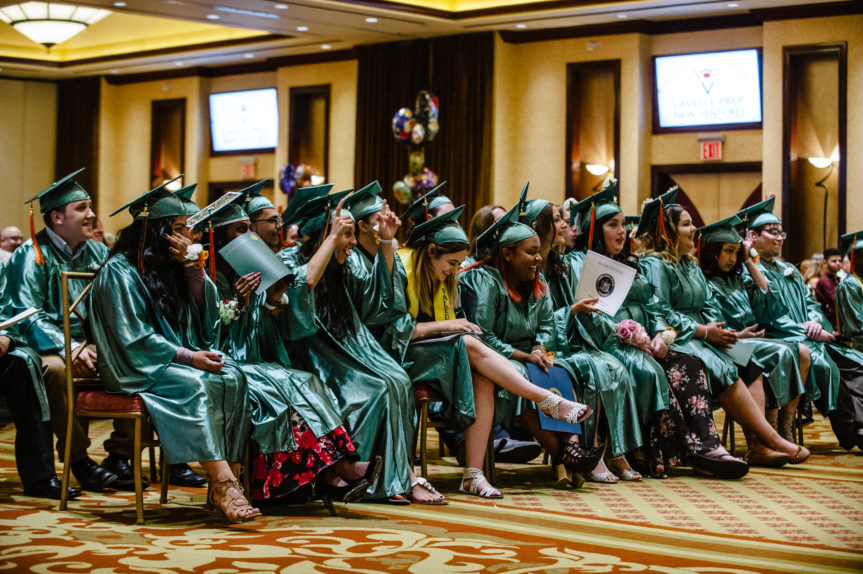There is a mocked and sometimes despised subgroup that historically went to separate schools with the worst conditions. And even when included in the same schools now, they are separated from their peers, given substandard services, subjected to abysmally low expectations and usually live down to them. This group’s performance is among the lowest and they boast a 50% dropout rate. However despite stereotypes and prejudice, many do more than survive they thrive, usually in spite of the system.
Of course I am talking about young people with mental health challenges.
They are everywhere, in every school, every community, all races and classes—at least until they are pushed out. Sometimes they move in silence, trying desperately not to attract attention. Suffering alone, struggling with their demons.
And it doesn’t have to be this way. Let me share some painful statistics—that are largely avoidable, and then let me show you a model that works. A school that deliberately recruits students facing these challenges and supports them a school where there was 100% college acceptance for the first two classes, and looking like it will continue for the third. Where graduation rates were 100% and 96% and will remain above 90% this year.
But before we look at the bright spots, we need to survey a dark canvass.
A Life and Death Matter
These are facts from the Children’s Mental Health Network
Four million children and adolescents in this country suffer from a serious mental disorder that causes significant functional impairments at home, at school and with peers. Of children ages 9 to 17, 21 percent have a diagnosable mental or addictive disorder that causes at least minimal impairment.[1]
- Although mental illness and disorders affect so many of our children and teens aged 6 to 17, 79% of them do not receive mental health care.[2]
- Suicide is the third leading cause of death in youth ages 15 to 24. More teenagers and young adults die from suicide than from cancer, heart disease, AIDS, birth defects, stroke, pneumonia, influenza and chronic lung disease combined.[3] Over 90 percent of children and adolescents who commit suicide have a mental disorder.[4]
- Approximately 50% of students age 14 and older who are living with a mental illness drop out of high school. This is the highest dropout rate of any disability group.[5]
- Eighty percent of people with multiple mental health and substance abuse disorders report onset before age 20.[6]
Many of us know these children, and some of us were them. And if you work with youth you have likely seen the excruciating costs first hand. I have lost kids and seen others struggle through every moment of pretty much every day. Though over these last several years I have been blessed to work with a set of community leaders and educators changing this narrative and turning these outcomes on their head.
The Crazy School with the Crazy Team for Crazy Kids
Over a decade ago a group of us approached the NYC DoE with a new idea. Create a school that deliberately recruited middle schoolers with emerging mental health challenges. The school would explicitly focus students on a college preparatory program that integrated wellness into the fabric of the school. There would be no separate classes, no extensive pull outs, and if kids were hospitalized we would save their spot.
I have told the story before—how the special education staff from the state didn’t believe in us or our ability to deliver an integrated school, “who will the normal kids look up to” or something like that they said. My friend at NYC DoE said the team was crazy and that I was crazy for working with them (not in a complimentary way).
But as longtime community folks they had stacked some chips, played them, and we finally got approved. And while it has been very difficult at times, the school is thriving, and we are applying for our fourth Integration Charter Schools charter. While each school is different (a K-12, a continuation high school, an early college high school, and now an autism inclusion program) they each target special needs students and set a 30% target, with most of those students being in highest tier of services.
Integration works
The magic is integration and preparation. Small classes with teachers and aides trained in academic subjects, special education and wellness. Everyone is in the same classes, and everyone learns wellness strategies to understand and address their “stuff,” even the staff. Wellness challenges are normal in adolescents, and we normalize them within the schools.
And more than that, we help young people to learn positive strategies to address their challenges. These are our children and we have failed them, a 50% dropout rate is entirely our fault. There are strategies that work, training that matters, and lives on the line-literally.
We can and should do better.
And if you want to support these schools and their students please visit our website.

